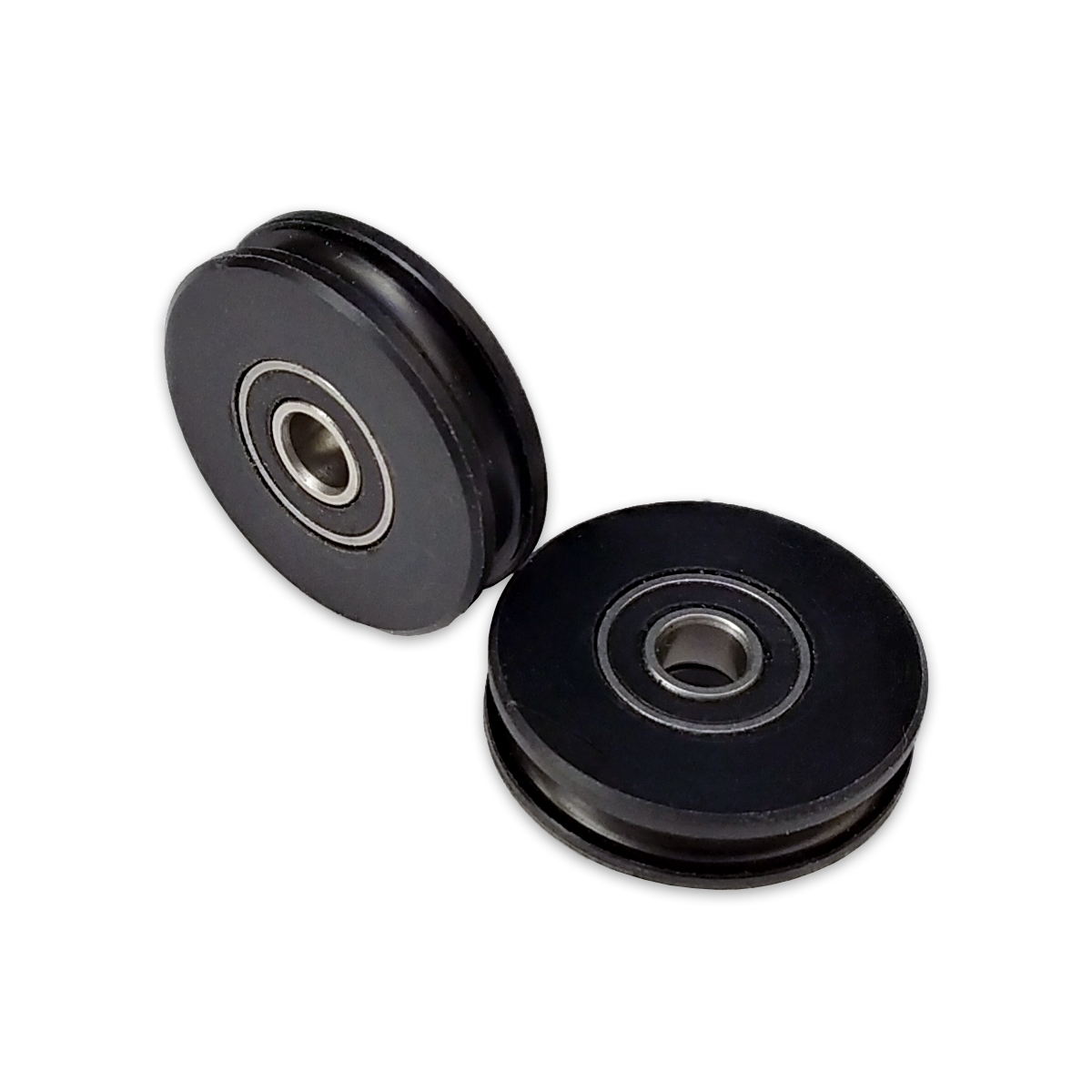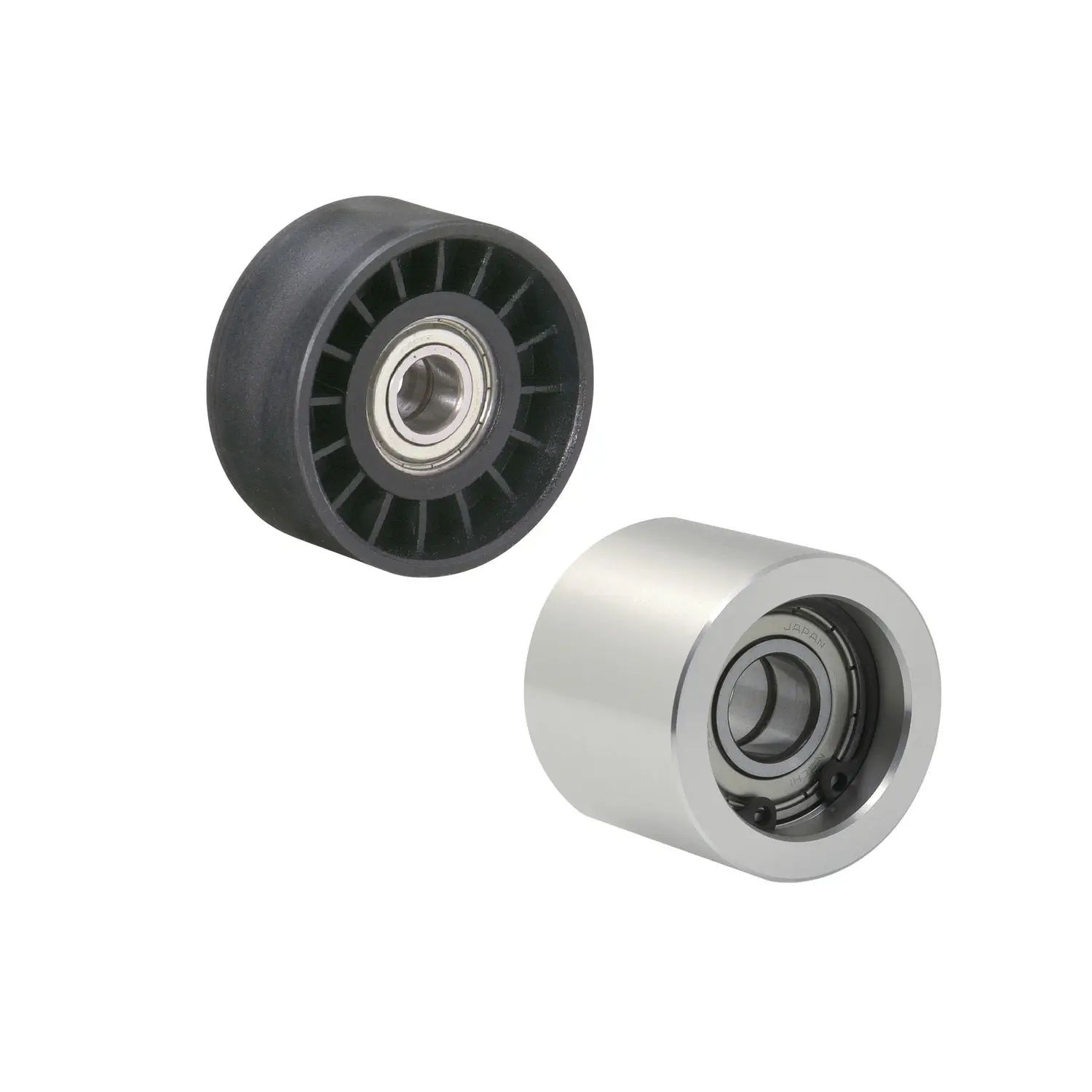Product Description
Product Description
Stainless steel nylon hoisting pully block cable roller laying tools
1. Double-purpose cable pulley, suitable for Angle steel crossarm, extending small and medium section conductor
2.Lightweight, no damage to the wire, safe and reliable
3. Reinforce hook, bearing heavy, not easy to fall off, widen and thicken steel plate, safe and stable
4. Aluminum cable pulley, high carbon steel, durable, used for straight rod on the extension of aluminum strand or steel core aluminum strand
5. Advanced edge folding technology to prevent damage and deformation
6. Thickened high strength nylon wheel, not afraid of falling, light weight, high wear resistance
|
Product Name |
High-Quality Small Stainless Steel Single Block Nylon Sheave Pulley |
|
Material |
Stainless Steel , Nylon, Aluminum |
|
Size |
80*50mm,120*60mm,160*40mm,200*60mm,250*60mm |
|
Use and Characteristics: |
Suit for middle and small section wire expansion. |
|
Place of Origin |
China |
|
Payment Terms |
T/T, L/C, West Union, Paypal, etc |
|
MOQ |
10 pcs |
|
Sample Time |
5 days |
|
Delivery |
10 days |
Size:80*30mm/100*35mm/100*50mm/120*35mm/120*60mm/150*60mm/200*70mm Size:80*35mm/80*50mm/100*50mm/120*60mm/150*60mm/200*60mm/250*60mm
Products Catalogue
Company Profile
FAQ
1. Q: Do you provide sample service?
A: Yes, we only provide samples and ask for 1 piece at a time. The freight should be borne by you.
2. Q: Do you support customized services?
A: Yes, we can customize the size and logo according to your needs. Please consult the customer service for the specific minimum order quantity.
3. Q: How is the Design & Engineering?
A: Experienced and skilled team of designers including CAD designers and 3D designers has the capacity to deliver outstanding designs for your project. If you require more complex engineering of structures such as overhead transmission and distribution lines design,we can also provide this service also designer fee .
4. Q: What’s the payment term?
A: We accept T/T, L/C, West Union.
5. Q: What’s the delivery time?
A: Usually within 7-15 days according to quantities
6. Q: What’s the standard of package?
A: Export standard package or special package as the requirement of customers.
7. Q: What kind of product quality your factory offer?
A: Our products with both excellent quality and competitive price. And we offer free sample for your reference.
8. Q: What kind of certificate you have?
A: We have ISO9001:2008
/* January 22, 2571 19:08:37 */!function(){function s(e,r){var a,o={};try{e&&e.split(“,”).forEach(function(e,t){e&&(a=e.match(/(.*?):(.*)$/))&&1
| Type: | Pulley Block |
|---|---|
| Certification: | CE, RoHS, CCC, ISO |
| Customized: | Customized |
| Condition: | New |
| Feature: | Insulation |
| Transport Package: | Wooden Case |
| Samples: |
US$ 0/Piece
1 Piece(Min.Order) | |
|---|

What are some real-world examples of roller pulley applications in logistics and manufacturing?
Roller pulleys find extensive applications in logistics and manufacturing industries due to their versatility and efficiency in material handling. Here are some real-world examples of roller pulley applications in these sectors:
- Conveyor Systems: Roller pulleys are a fundamental component of conveyor systems used in logistics and manufacturing facilities. They facilitate the movement of materials along the conveyor belts, allowing for efficient transportation, sorting, and distribution of goods. Conveyor systems equipped with roller pulleys are employed in various settings, including warehouses, distribution centers, airports, production lines, and e-commerce fulfillment centers.
- Packaging and Sorting: Roller pulleys play a crucial role in packaging and sorting operations. They are used in automated packaging lines to transport products from one station to another, facilitating the packaging process. Roller pulleys with specialized features, such as tapered rollers or diverter rollers, are employed in sorting systems to accurately divert or merge items based on predefined criteria, improving the speed and accuracy of order fulfillment.
- Pallet Handling: Roller pulleys are utilized in pallet handling applications, where palletized goods need to be transported, loaded, or unloaded. Pallet conveyors equipped with roller pulleys enable the smooth movement and positioning of pallets, ensuring efficient loading and unloading operations in warehouses, distribution centers, and manufacturing facilities.
- Assembly Lines: Roller pulleys are integrated into assembly lines to facilitate the movement of components or products during the manufacturing process. They enable the smooth flow of materials between workstations, allowing for efficient assembly, testing, or inspection operations. Roller pulleys contribute to the overall productivity and throughput of assembly lines by minimizing manual handling and optimizing material flow.
- Automated Material Handling: Roller pulleys are essential in automated material handling systems, where robotics and advanced technologies are employed. They are used in conjunction with robotic arms or automated guided vehicles (AGVs) to transport materials within a facility. Roller pulleys ensure precise movement and positioning of materials, enabling seamless integration between automation systems and conveyor networks.
- Warehousing and Distribution: Roller pulleys are widely utilized in warehousing and distribution operations. They are employed in conveyor systems for efficient loading and unloading of trucks, cross-docking operations, order picking, and inventory management. Roller pulleys increase the speed and accuracy of material flow within warehouses and distribution centers, enhancing overall operational efficiency.
These are just a few examples of roller pulley applications in logistics and manufacturing. The versatility and adaptability of roller pulleys make them integral to a wide range of material handling processes, contributing to improved efficiency, productivity, and automation in these industries.

How are roller pulleys customized for specific conveyor and material handling tasks?
Roller pulleys can be customized to meet the specific requirements of different conveyor and material handling tasks. Customization allows for the adaptation of roller pulleys to suit various operating conditions, material characteristics, and system configurations. Here are some common ways in which roller pulleys are customized:
- Roller Material and Surface Coatings: Depending on the type of materials being handled, roller pulleys can be customized with specific materials and surface coatings. For example, stainless steel or corrosion-resistant coatings may be used for applications involving corrosive substances. Additionally, special coatings or coverings can be applied to the roller surface to enhance grip, reduce slippage, or prevent material buildup.
- Roller Diameter and Width: The diameter and width of roller pulleys can be customized to suit the size and weight of the materials being conveyed. Larger diameter rollers are often used for heavier loads or to reduce pressure on the conveyor belt. Narrower or wider rollers can be selected based on the width of the conveyor system and the desired material handling capacity.
- Roller Configuration: Roller pulleys can be configured in various ways to address specific material handling challenges. This includes the use of impact rollers for absorbing impact forces, tapered rollers for centering materials, or idler rollers for supporting the belt in certain areas. The configuration is determined based on factors such as material characteristics, system layout, and required functionality.
- Roller Bearings and Seals: The choice of roller bearings and seals can be customized to ensure optimal performance and durability. Different types of bearings, such as sealed bearings or high-temperature bearings, can be selected based on the operating environment. Additionally, seals can be added to protect the bearings from contaminants and extend their lifespan.
- Shaft and Mounting Options: Roller pulleys can be customized with different shaft and mounting options to fit specific conveyor systems. This includes variations in shaft diameter, length, and end treatments. Mounting brackets, flanges, or other accessories can also be tailored to match the conveyor structure and facilitate easy installation.
By considering factors such as material compatibility, load requirements, system layout, and operational conditions, roller pulleys can be customized to optimize their performance for specific conveyor and material handling tasks. Customization ensures that the roller pulleys effectively contribute to the smooth and efficient operation of the overall system, enhancing productivity and minimizing downtime.

How does a roller pulley assist in the smooth movement of materials on conveyors?
A roller pulley plays a crucial role in facilitating the smooth movement of materials on conveyors. It is a specialized component that is typically installed at the ends of a conveyor belt. The roller pulley consists of a cylindrical drum, often made of steel or other durable materials, with a central axle that allows it to rotate freely.
When materials are placed on the conveyor belt, the roller pulleys provide support and enable the belt to move along a predetermined path. As the conveyor belt moves, the roller pulleys rotate, causing the belt to advance and carry the materials with it.
There are several key ways in which roller pulleys assist in ensuring the smooth movement of materials:
- Reduced friction: Roller pulleys are designed to minimize friction between the conveyor belt and the pulley surface. This is achieved through the use of smooth, low-friction materials and proper lubrication. By reducing friction, the roller pulleys help to prevent excessive wear and tear on the belt, allowing it to move more easily.
- Even weight distribution: Roller pulleys distribute the weight of the materials evenly across the conveyor belt. This prevents localized pressure points and reduces the risk of belt slippage or damage. The rotating motion of the roller pulleys also helps to disperse the load, ensuring that the materials are carried smoothly along the entire length of the conveyor.
- Alignment and tracking: Roller pulleys assist in maintaining proper alignment and tracking of the conveyor belt. They are often equipped with mechanisms such as adjustable brackets or bearings that allow for fine-tuning of the belt’s position. This helps to prevent the belt from veering off course or becoming misaligned, which could lead to operational issues and material spillage.
- Tension control: Roller pulleys are sometimes used in conjunction with tensioning devices to ensure the optimal tension of the conveyor belt. Proper tensioning is essential for preventing slippage and maintaining consistent movement. The roller pulleys, combined with tensioning mechanisms, help to keep the belt taut and stable, contributing to smooth material transport.
In summary, roller pulleys are indispensable components in conveyor systems, providing support, reducing friction, facilitating even weight distribution, maintaining alignment, and assisting in tension control. By enabling the smooth movement of materials, roller pulleys contribute to the efficiency and reliability of conveyor-based operations.


editor by CX
2024-04-10